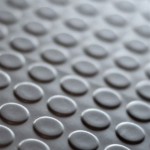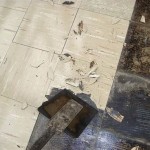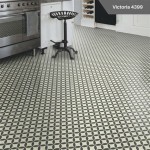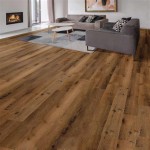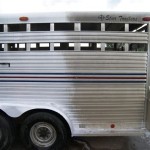Boat Flooring Types: A Comprehensive Guide
Selecting the appropriate flooring for a boat is a critical decision, impacting aesthetics, safety, comfort, and the vessel's overall value. The marine environment presents unique challenges, requiring materials resistant to water, UV radiation, and the rigors of constant movement. This article provides a detailed overview of various types of boat flooring, outlining their advantages, disadvantages, and ideal applications.
Numerous factors contribute to the choice of boat flooring. These include the type of boat (e.g., fishing boat, pontoon boat, yacht), the intended use of the vessel, the budget, and individual aesthetic preferences. Each material possesses distinct characteristics that make it suitable for specific applications. Understanding these characteristics is vital for making an informed decision.
Key Considerations for Boat Flooring Selection
Before delving into specific types of flooring, it's important to understand the key criteria that should guide the selection process. Durability, water resistance, safety, and aesthetics are paramount.
Durability: Boat flooring must withstand constant exposure to the elements, including saltwater, sunlight, and temperature fluctuations. It should also resist wear and tear from foot traffic, fishing gear, and other equipment. The lifespan of the flooring directly impacts its overall value and replacement frequency.
Water Resistance: Water intrusion can lead to significant problems, including mold growth, rot, and structural damage. The chosen flooring should be waterproof or at least highly water-resistant to prevent these issues. Non-porous materials are generally preferred in marine environments.
Safety: Slippery surfaces can pose a serious hazard, especially in wet conditions. Boat flooring should provide adequate traction to prevent slips and falls. Textured surfaces or non-slip coatings are often incorporated to enhance safety.
Aesthetics: The flooring should complement the overall design and style of the boat. A variety of colors, patterns, and textures are available to achieve the desired aesthetic. The visual appeal of the flooring contributes to the overall enjoyment of the vessel.
Types of Boat Flooring Materials
Several diverse materials are commonly used for boat flooring, each offering a unique blend of characteristics. The following sections detail some of the most popular options.
Marine-Grade Carpet: Marine-grade carpet is a popular choice due to its affordability, comfort, and aesthetic appeal. It is specifically designed to withstand the harsh marine environment. However, it requires careful maintenance and is not as water-resistant as other options.
Marine-grade carpets differ from standard carpets in their construction and materials. They typically utilize synthetic fibers, such as polypropylene or nylon, which are resistant to mold, mildew, and UV degradation. The backing is also designed to prevent water absorption and promote quick drying.
The primary advantage of marine-grade carpet is its comfort underfoot. It provides a soft and cushioned surface, making it ideal for areas where passengers will be spending a lot of time. It also helps to reduce noise and vibration. However, it requires regular cleaning to prevent staining and the buildup of dirt and debris.
Vinyl Flooring: Vinyl flooring is a durable, water-resistant, and easy-to-maintain option for boats. It is available in a wide range of colors, patterns, and textures, allowing for considerable design flexibility. Vinyl is also relatively affordable, making it a popular choice for many boat owners.
Marine-grade vinyl flooring is specifically formulated to withstand the rigors of the marine environment. It is resistant to UV degradation, fading, and cracking. It is also highly resistant to water damage, making it ideal for areas that are frequently exposed to moisture.
Vinyl flooring is easy to clean and maintain. It can be simply wiped down with a damp cloth or mop. It is also resistant to staining, making it a practical choice for boats that are used for fishing or other activities that may involve spills.
EVA Foam Flooring: Ethylene-vinyl acetate (EVA) foam flooring has gained popularity in recent years due to its comfortable, non-slip surface and customizable designs. It's a lightweight, closed-cell foam that is waterproof and UV resistant, making it suitable for various boat types.
EVA foam flooring offers excellent cushioning and shock absorption, making it comfortable to walk on for extended periods. Its closed-cell structure prevents water absorption, eliminating the risk of mold and mildew growth. The textured surface provides excellent grip, even when wet, enhancing safety.
EVA foam flooring can be easily cut and shaped to fit any boat deck. It is available in a wide range of colors, patterns, and thicknesses, allowing for customized designs. Installation is typically straightforward, using adhesive backing for easy application.
Teak Flooring: Teak is a classic and luxurious choice for boat flooring. It is naturally water-resistant, durable, and aesthetically pleasing. However, teak flooring is more expensive than other options and requires regular maintenance to preserve its appearance and prevent weathering.
Teak contains natural oils that make it resistant to water damage, rot, and insect infestation. Its dense grain provides excellent strength and durability, allowing it to withstand heavy use. The warm, rich color of teak adds a touch of elegance to any boat.
While teak is naturally water-resistant, it requires regular sealing to prevent weathering and maintain its appearance. Without proper maintenance, teak can become gray and faded over time. It also needs to be cleaned regularly to remove dirt and debris.
Synthetic Teak Flooring: Synthetic teak flooring offers the look and feel of real teak without the high cost and maintenance requirements. It is made from durable PVC or other synthetic materials that are resistant to water, UV radiation, and staining.
Synthetic teak flooring requires minimal maintenance compared to real teak. It does not need to be sealed or oiled and can be easily cleaned with soap and water. It is also resistant to fading and cracking, ensuring a long-lasting and attractive surface.
Synthetic teak flooring is available in a variety of colors and patterns, mimicking the look of real teak. It can be installed using adhesives or mechanical fasteners. While it may not possess the same natural character as real teak, it offers a practical and cost-effective alternative.
Marine Plywood: While not a finished flooring surface in itself, marine plywood is a critical subfloor material for many boat flooring installations. It's engineered to resist rot and delamination in wet environments, providing a stable base for other flooring types.
Marine plywood is manufactured using waterproof adhesives and high-quality wood veneers. It is designed to withstand prolonged exposure to moisture without warping or deteriorating. The absence of voids in the plywood layers minimizes the risk of water penetration.
Selecting the appropriate thickness of marine plywood is essential for ensuring adequate structural support. The subfloor should be properly sealed and protected from water intrusion to prevent rot. Regularly inspecting the subfloor for signs of damage is crucial for maintaining the integrity of the flooring system.
Factors Influencing Flooring Wear and Tear
The lifespan of boat flooring is influenced by several factors, including the intensity of use, environmental conditions, and maintenance practices. Understanding these factors can help extend the flooring's lifespan and minimize the need for replacements.
Foot Traffic: High-traffic areas will naturally experience more wear and tear than less frequently used areas. Selecting a durable flooring material for these areas is essential. Regular cleaning and maintenance can also help to extend the lifespan of the flooring.
UV Exposure: Prolonged exposure to sunlight can cause fading, cracking, and degradation of certain flooring materials. UV-resistant coatings or materials can help to protect the flooring from damage. Applying protective coverings when the boat is not in use can also reduce UV exposure.
Saltwater Exposure: Saltwater can corrode and damage many flooring materials. Regular rinsing with fresh water can help to remove salt deposits and prevent corrosion. Applying protective coatings can also enhance the flooring's resistance to saltwater.
Chemical Spills: Spills of fuel, oil, or other chemicals can stain or damage boat flooring. Promptly cleaning up spills and using appropriate cleaning products can help to prevent permanent damage. Choosing flooring materials that are resistant to chemical staining is also beneficial.
Installation Considerations
Proper installation is crucial for ensuring the longevity and performance of boat flooring. The installation method will vary depending on the type of flooring and the boat's construction. Following the manufacturer's instructions is essential for achieving a successful installation.
Surface Preparation: The subfloor must be clean, dry, and level before installing any type of flooring. Removing any existing flooring, sanding down rough spots, and filling in any cracks or holes is necessary. Ensuring proper adhesion is critical for preventing flooring from lifting or peeling.
Adhesive Selection: Using the appropriate adhesive is crucial for bonding the flooring to the subfloor. Marine-grade adhesives are specifically designed to withstand the harsh marine environment. Choose an adhesive that is compatible with both the flooring material and the subfloor material.
Sealing and Waterproofing: Sealing the edges and seams of the flooring can help to prevent water intrusion. Using marine-grade sealants or caulking can create a waterproof barrier. Properly sealing the flooring is essential for preventing mold growth and structural damage.
Professional Installation: For complex installations or when using specialized materials, consider hiring a professional installer. Experienced installers have the knowledge and skills necessary to ensure a proper and long-lasting installation. This is particularly important for valuable materials like teak.
Maintaining Boat Flooring
Regular maintenance is essential for preserving the appearance and extending the lifespan of boat flooring. The specific maintenance requirements will vary depending on the type of flooring material.
Regular Cleaning: Regularly sweeping or vacuuming the flooring can help to remove dirt, debris, and sand. Wiping down the flooring with a damp cloth or mop can remove stains and spills. Using mild soap and water is generally sufficient for cleaning most types of boat flooring.
Protecting from UV Exposure: Applying UV-resistant coatings or using protective coverings can help to prevent fading and degradation. Parking the boat in shaded areas whenever possible can also reduce UV exposure. This is especially vital for carpet and vinyl flooring surfaces.
Preventing Water Damage: Addressing any leaks or water intrusion promptly can help to prevent mold growth and structural damage. Ensuring proper drainage and ventilation can also help to keep the flooring dry. Inspecting and resealing seams periodically is crucial.
Addressing Damage Promptly: Repairing any cracks, tears, or other damage promptly can prevent them from worsening. Using appropriate repair materials and techniques is essential for restoring the flooring's integrity. Small repairs can prevent bigger, more expensive issues down the line.

How To Select The Right Boat Flooring Discover Boating

7 Types Of Boat Flooring Options You Should Know Dekit Fort Myers

5 Things To Consider For The Best Boat Flooring Outfitters

Boat Flooring Options Compare S Styles And Installation

Eva Boat Flooring Options Custom Deck Armour

Marine Flooring Options Highest Quality Foam Topdek

Five Popular Diy Boat Flooring Ideas

5 Things To Consider For The Best Boat Flooring Outfitters

Five Popular Diy Boat Flooring Ideas

The 3 Best Boat Flooring Options You Should Know



